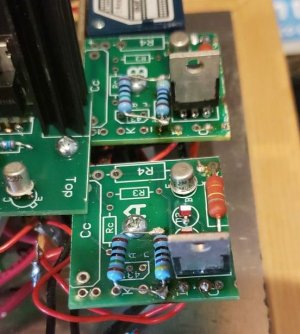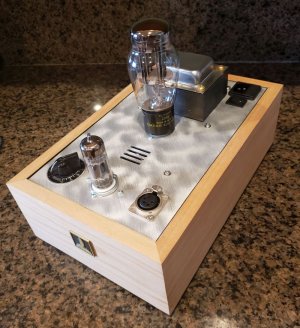Hello everyone,
I performed some mods to my crack w/speedball which I can get into detail about later, but for now I just wanted to get some opinions on this because the mods aren't relevant to my question.
I swapped the 12AU7 to a Valvo 45 degree getter ECC82. The listing I bought was $68 and didn't contain a date of manufacture or testing information but I just wanted to spend as little money as possible to get a feel for this tube. I heard the ECC82 to aim for is the Valvo ECC82 Long Plate Foil D Getter 56' but they are $500≥ on ebay and I wasn't sure I was willing to drop that much on a tube.
I think the tube sounds great despite how much I paid for it. The bass has been improved significantly and the music feels closer or more present like I'm in between the sound. I guess if I'm getting really nitpicky, the treble sounds a little muddier but I will have to swap back and see. The only real issue is I hear a hiss that remains a static volume regardless of the volume knob position that is predominantly in the left channel. When I'm playing music, I obviously don't really notice it but I just wanted to hear if there is anything I can do about it or if I simply get what I pay for(I'm assuming the latter is true.)
I would leave a link to the listing here but I guess I'm not allowed. so if you really care to check out the listing yourself to see how much of a gamble it was: ebay . com/itm/155521619912
I also don't know what the numbers on the sticker indicate but I assume the testing information? I can take some photos of it myself because I know the listing photos are really difficult to make out. It seems like the sticker reads 11.0 and 9.5 but I'm really uncertain.
EDIT - 01/30/2024: I am letting the tube burn in because I looked around online and that is what many others suggested including Mucker who replied below this post. From what I can tell now thinking about it/listening, the hiss is definitely dissipating and has gotten significantly better since I initially powered it on.
I created this post to ask about the hiss but my true question stems from a bit of FOMO. Is there a lot I could be missing out on by using my tube instead of the very specific version I mentioned above that is manufactured in 1956? To put it another way, what really distinguishes my tube (which I assume was manufactured more recently and is therefore cheaper) from the other listings that seem to be confirmed to have been manufactured in 1956? I'm really enjoying it and don't see why I would want to buy another one other than to say I have it at this point, or to find one that tests better.
I know I won't receive an answer that satisfies my line of questioning without being able to directly compare my tube to the more sought after and expensive version but I just thought I would ask because this question isn't really limited to this tube. So considering the following question that is broadly applicable to any tube, why are the newer versions/recreations cheaper and less sought after? Is it a classic case of elitism? Or are there genuine differences in how they are manufactured that could lead to different sounds? And should I even care?



